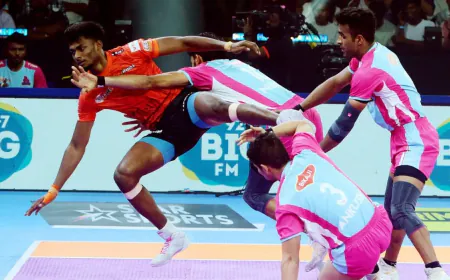Man City’s Weaknesses Analyzed and Exploited by Crystal Palace and Oliver Glasner
Crystal Palace delivered a significant blow to Manchester City’s title hopes with a 2-2 draw at Selhurst Park, leaving the reigning champions eight points off the top of the Premier League table. After the match, Palace manager Oliver Glasner detailed the tactical approach that allowed his team to frustrate City, leveraging intensity, exploiting spaces around Ilkay Gundogan, and capitalizing on set-pieces.

High-Intensity Play
Glasner emphasized that Palace’s superior intensity and work rate were critical in unsettling City.
“We knew we could play with a higher intensity than City; the data supported this,” Glasner explained. “In transitions, we aimed to exploit their vulnerability by getting in behind them. City dominates possession in most games, but they rank low in high-intensity and sprinting distances.
“They’ve struggled against teams with high intensity—like Bournemouth, Tottenham, Brighton, and Liverpool. It’s our strength, and we thought it could help us. Beating City in possession is nearly impossible, so we needed to try something different.”
Statistics reinforce Glasner’s claim: heading into the weekend, City ranked second-bottom in the Premier League for sprints, and they had been out-sprinted in 10 of their 14 matches. In games where City was out-sprinted by the largest margins, they had lost four times.
Space Around Gundogan
Palace also targeted the spaces around City’s defensive midfielder, Ilkay Gundogan, who struggled in the absence of regular starter Rodri and an injured Mateo Kovacic. At 34 years old, Gundogan found it challenging to maintain defensive solidity, particularly when isolated in City's 4-1-4-1 formation.
With Eberechi Eze and Ismaila Sarr positioned to exploit these gaps and Will Hughes and Jefferson Lerma controlling central midfield, Palace created opportunities by pressing into the spaces left unguarded.
“There was so much space around Gundogan on the opposite side,” Glasner noted. “We identified this at halftime and encouraged our players to take one or two touches to exploit it. The first goal came from this exact strategy.”
Glasner further elaborated on City’s tactical vulnerability: “When you play with one No. 6 in a 4-1-4-1, there’s naturally space on either side of the defensive midfielder. It’s about finding that space through passing or pressing. For our first goal, we used a long ball to create the chance. Once we get our runners into these spaces, it’s tough for City to defend against us.”
Exploiting Set-Pieces
Despite City’s strong defensive record on set-pieces—they had conceded only one goal from such situations before this match—Palace identified an opportunity and capitalized.
Maxence Lacroix’s towering header off Hughes’ corner highlighted City’s vulnerability due to the absence of key aerial defenders like Rodri, Nathan Ake, and Manuel Akanji.
“They’re missing many strong headers in defense,” Glasner said. “Players like Rodri, Ake, and Akanji are not only tall but excellent at defending set-pieces. We knew this was an area we could exploit.”
Set-pieces have been a consistent strength for Palace this season, with only three teams scoring more goals from dead-ball situations. Their ability to capitalize on such opportunities further disrupted City’s game plan.
Guardiola’s Challenges

Pep Guardiola, dealing with a depleted squad, acknowledged the strain on his players.
“We played the last 15 minutes with 10 men after Rico Lewis’ red card. Seven of our potential starters are injured, and many players have accumulated significant minutes. Palace’s physicality was a challenge,” Guardiola admitted.
The absence of key players like Rodri has left City vulnerable to fast transitions and counterattacks, areas that Palace exploited effectively.
Analysis: Adapting to the Opposition
Sky Sports analysts noted that City’s tactical frailties were evident throughout the game. While Guardiola’s side maintained significant possession, they struggled to convert it into dominance, especially in the absence of creative and defensive stalwarts.
“City’s reliance on possession makes them susceptible to high-intensity teams,” the analysts observed. “Palace’s approach, particularly their ability to exploit spaces and press with intensity, exposed City’s structural weaknesses. The absence of Rodri and other defensive leaders exacerbated the situation.”
The Road Ahead
With City’s vulnerabilities now apparent, upcoming opponents will likely adopt similar strategies. Guardiola faces the dual challenge of adapting his tactics and hoping for the timely return of injured players.
For Glasner and Palace, the draw was a testament to their ability to execute a well-thought-out plan against one of the best teams in the league. For City, it was a wake-up call as they attempt to stay in the title race amid mounting challenges.
City’s resilience will be tested as they prepare for upcoming fixtures, while their rivals, including Liverpool, Arsenal, and Chelsea, look to extend their advantage at the top of the table.





















































